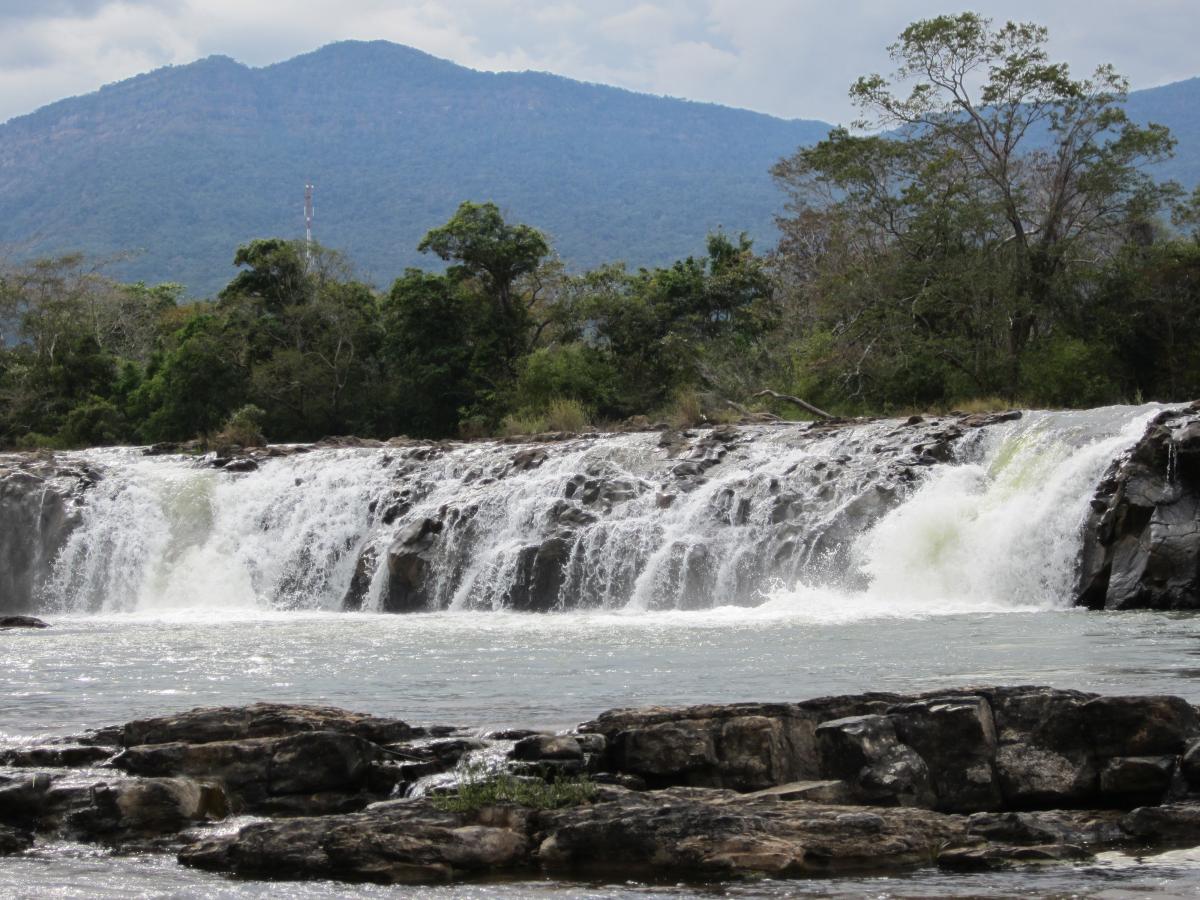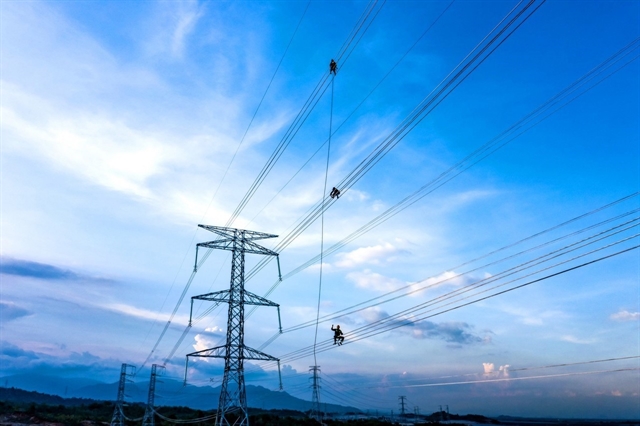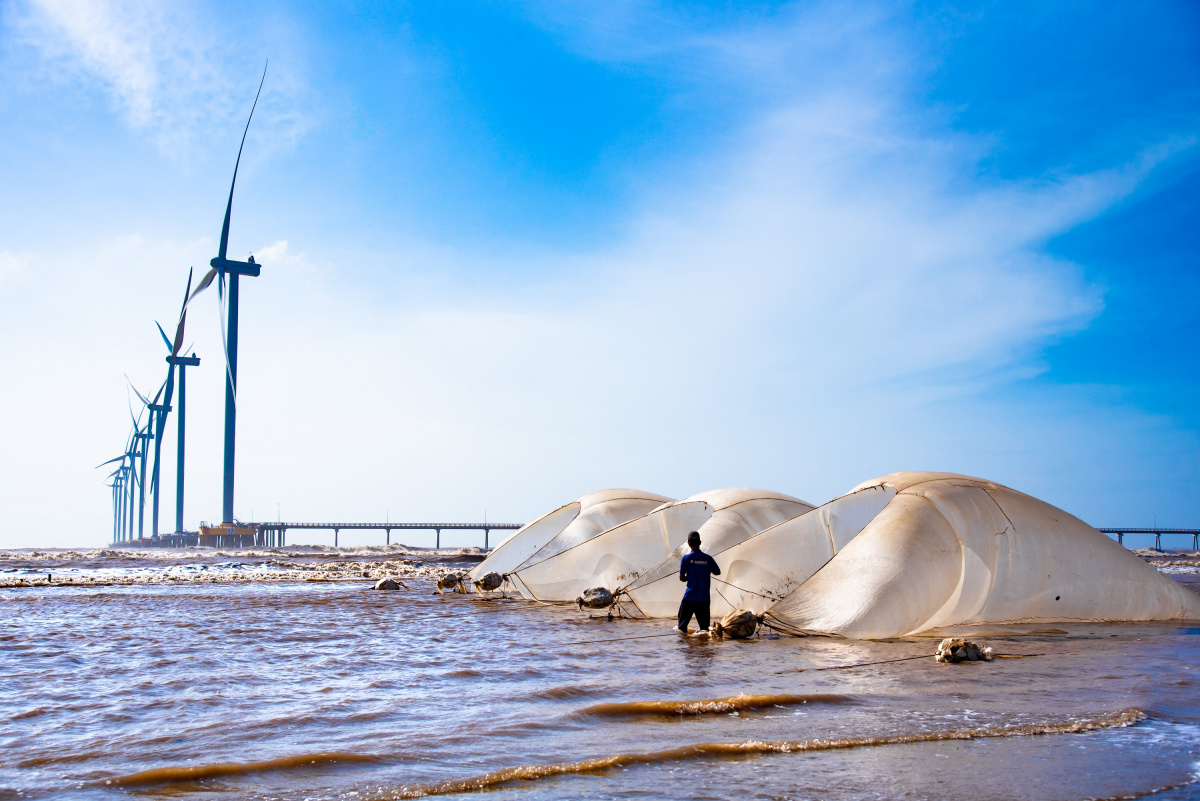The Xe Kong 1 dam: why it matters for Vietnam
The Xe Kong, which rises in Thua Thien Hue before flowing into Lao PDR and then into Cambodia, is the last unobstructed major tributary of the Mekong and is of irreplaceable value for regional food security and the productivity of the Mekong Delta. The Srepok and Sesan, which together with the Xe Kong form the eponymous 3S rivers, were blocked just above their confluence with the Mekong by the completion of the Lower Sesan 2 dam in late 2017.

Photo: Sekong River, 2012 © IUCN ARO
This leaves the Xe Kong as the only route open to the migratory fish that spawn in the headwaters of the river before moving into the Tonle Sap in Cambodia to feed and grow to commercial size. Half of the fish caught in the Mekong basin are long-range migratory fish and the closure of the Xe Kong could lead to the loss of 20% of basin-wide fish production. Offsetting the loss of protein in Cambodia alone would require a tripling of the area under agriculture, which implies the conversion to farmland of almost the nation’s entire forest cover.
The Xe Kong is also the last remaining source of sediment from the 3S to the Mekong Delta. Until the Yali Falls dam in Gia Lai was built in 1997, the 3S provided 25 million tons of sediment a year. Deltas sink naturally and only remain above sea level if there is a continuous supply of sediment, particularly sand. But dams are very good at trapping sand and the LS2 will reduce 3S sediment delivery by two-thirds. Given the immense economic importance of the Mekong Delta, source of most of Vietnam’s rice, fruit, and aquaculture, there is an overwhelming case for keeping the Xe Kong free-flowing.
But as the last major free-flowing tributary of the Mekong, the Xe Kong is also threatened by dams. Of particular concern is the Xe Kong 1, also known as the Xe Kong Downstream A. This dam would be located in the broad flood plain of the lower Xe Kong close to the Cambodia border. It would block fish migrating upstream and even if fish did manage to bypass the dam using a fish ladder, fish larvae and juveniles trying to migrate downstream would suffer almost 100% mortality in the slow moving reservoir. Maintaining a fast flowing reservoir would reduce power generation to the point where the dam was uneconomic.
Both Cambodia and Vietnam would suffer substantial damages from the Xe Kong 1, Cambodia because of reduced capture fisheries and Vietnam because of reduced sediment supply.
Ironically, the company that has the right to build and operate the Xe Kong 1 is 80% owned by a Vietnamese company, Hoang Anh-Gia Lai. There is therefore the prospect that HAGL builds a dam that threatens food security in Cambodia and the survival of the Mekong Delta. HAGL does not need approval from the Vietnamese government to build the dam. But given its potential impacts, the Vietnamese certainly has a clear interest in whether or not the dam is built, especially since it would only generate 76 MW, an insignificant contribution to regional power production. Yali Falls, by comparison, generates 720 MW. The costs of the Xe Kong 1 are therefore way out of proportion to the power benefits.
But a decision on whether or not to build the Xe Kong 1 has broader implications. Vietnam is currently struggling to persuade Cambodia and Lao PDR to reconsider plans to build dams on the Mekong mainstream based on their likely impacts on the delta. Completed in 2015, the government’s Mekong Delta Study concluded that fish production and sediment supply to the delta would be cut by over 50% if 11 mainstream dams were built. But these arguments, and Vietnam’s negotiating position, would be fatally undermined if a Vietnamese-owned dam were built that closed off the Xe Kong. It would be a huge diplomatic own goal.
The Natural Heritage Institute, a non-profit non-governmental organization based in San Francisco that works on rivers of exceptional ecological value that have been significantly altered or subject to imminent development pressure, recently completed a master plan for the Xe Kong that shows that all of the power forgone by not building a cascade of dams, including the Xe Kong 1, could be replaced by a combination of building dams on the steep tributaries of the upper Xe Kong and installing solar panels on reservoirs (where grid connections are already available and water cooling increases their efficiency). The alternative dams would be designed to allow sediment flushing and to maintain flow patterns conducive to the needs of the migratory fish. Solar is ideally suited for the large reservoir created by the existing 290 MW Xe Kaman 1, a dam on the upper Xe Kong owned by Lao Power Joint Stock Company, a subsidiary of the Vietnamese Song Da Corporation.
The fate of the last free-flowing portion of the Mekong, with consequences that will be felt acutely in the delta, is at stake in the decision on the Xe Kong 1. Since there are economically viable alternatives to the Xe Kong 1, the Vietnamese government has both the opportunity and responsibility to insist that HAGL explores opportunities to invest in less risky dams in alternative locations, as NHI’s master plan proposes. This approach to optimizing energy and food security benefits is fully consistent with Vietnam’s national security interests as well as Lao PDR’s policy on sustainable hydropower development, which was approved by the prime minister in 2015.



